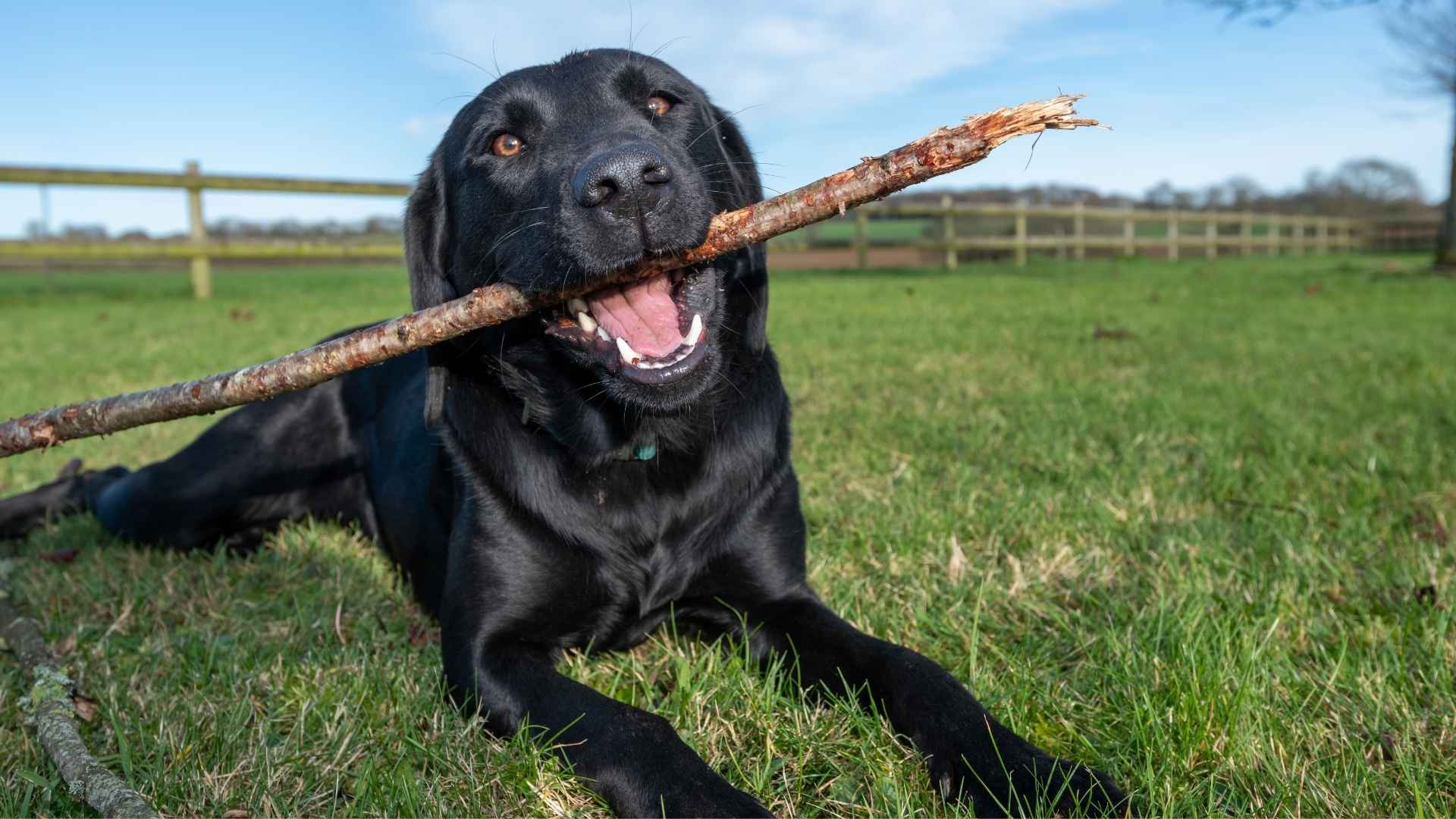Some dogs are content to snooze the day away, but others? They need just a little more action to stay truly happy. Occasionally, restless dogs walk that fine line between chill and charged — they’re usually calm, but now and then, they crave a burst of activity. Whether it’s a sudden dash around the yard or an unprompted demand for a new toy, these pups keep things interesting.
Their restlessness isn’t constant, but it’s enough to surprise even experienced dog owners. If you’ve ever wondered why your usually laid-back pup has random zoomies or sudden mischief moods, you might just be living with one of these occasionally restless dogs.
In this post, we’ll explore what makes these breeds tick, why they need periodic stimulation, and how you can keep them happy, healthy, and well-balanced, without burning yourself out in the process. Ready to decode your dog’s occasional energy bursts? Let’s dive in!
Occasionally Restless Dog Breeds
1. Labrador Retriever

Labrador Retrievers are famously friendly, gentle, and eager to please. They’re known for their easygoing temperament and loyalty, making them ideal family pets. Most of the day, they’re content to lounge beside you or follow you quietly around the house. But don’t be fooled by their chill vibe — these dogs have energy reserves that show up when you least expect it.
Labradors are a classic example of an occasionally restless dog. They need outlets for their physical and mental energy. Without it, they may surprise you with sudden zoomies, sock-stealing antics, or spontaneous digging in the backyard. These spurts of restlessness are their way of saying, “Let’s do something fun!”
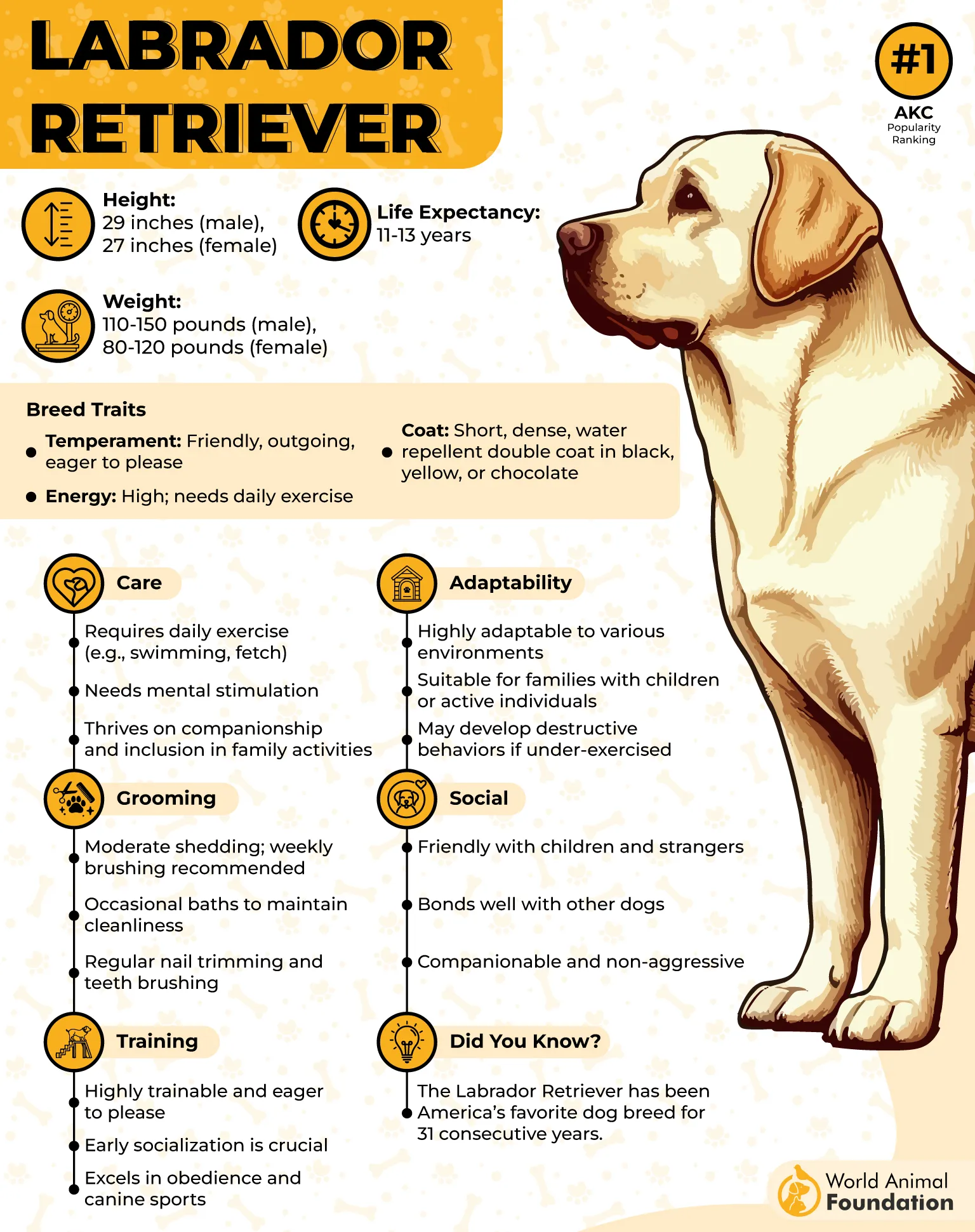
Their agitation often kicks in when they’re under-stimulated. Labs thrive on interaction, fetch sessions, and even puzzle toys. Mental enrichment is just as important as exercise. If ignored, they may resort to chewing furniture or barking for attention, not out of disobedience, but sheer boredom.
What sets Labs apart is their emotional sensitivity. They easily pick up on your mood and environment. A Labrador that senses tension or inactivity may become restless to “fix” the energy. This makes them excellent companions, but also dogs that need purpose and inclusion in daily life.

The good news? Their bursts of restlessness are manageable and even endearing. A daily walk, a swim, or a short game of tug can reset their mood. With the right balance of rest and stimulation, your Labrador will remain the loving, slightly goofy best friend you hoped for, with just enough energy to keep things interesting.
2. Australian Shepherd

Australian Shepherds are intelligent, energetic, and highly trainable, but like any breed, they can experience occasional bouts of energy. These moments are usually a result of boredom, a lack of stimulation.
A typically calm and focused Aussie can suddenly show signs of excessive panting, pacing, and difficulty settling — all signs of occasional edginess that every owner needs to be aware of.

Understanding the difference between normal restive behavior and signs of illness is key to ensuring your Australian Shepherd’s well-being. Regular check-ups with your veterinarian, especially as they age, can help maintain a balanced, healthy lifestyle.
While such restive behavior could be linked to a more serious health condition like Cushing’s disease, Cushing’s disease occurs when the pituitary gland or adrenal glands produce excessive amounts of cortisol, leading to symptoms like increased thirst, frequent urination, and increased appetite.
If your Aussie suddenly starts exhibiting these signs alongside physical discomfort, such as excessive panting, it might indicate an issue with the adrenal glands. A visit to the vet for blood tests and possibly X-rays can help rule out issues like adrenal tumors or other complications related to Cushing’s.
It’s important to monitor your Aussie’s feeding habits and overall health to catch any potential health issues early. If the issue persists or if they show signs of increased hunger or thirst, it’s essential to get them checked. In cases of Cushing’s disease or other underlying conditions, early intervention can significantly improve their quality of life.
3. Border Collie

Border Collies are often calm and collected, especially after proper training. But beneath their composed appearance lies a mind that rarely stops working. For many owners, it’s easy to notice their dog restless at random times — circling the room, whining softly, or seeking tasks that don’t exist. It’s not hyperactivity, just a need to release built-up energy and thoughts.
Loud noises, sudden changes, or a lack of mental stimulation can trigger agitation in Border Collies. These dogs are highly sensitive and alert, always scanning their environment. Even a small shift in your routine might throw them off. Sometimes, it’s just a guess, but if your Collie starts acting different — pacing, staring, or trying to “herd” family members — it’s often their way of showing boredom or stress.
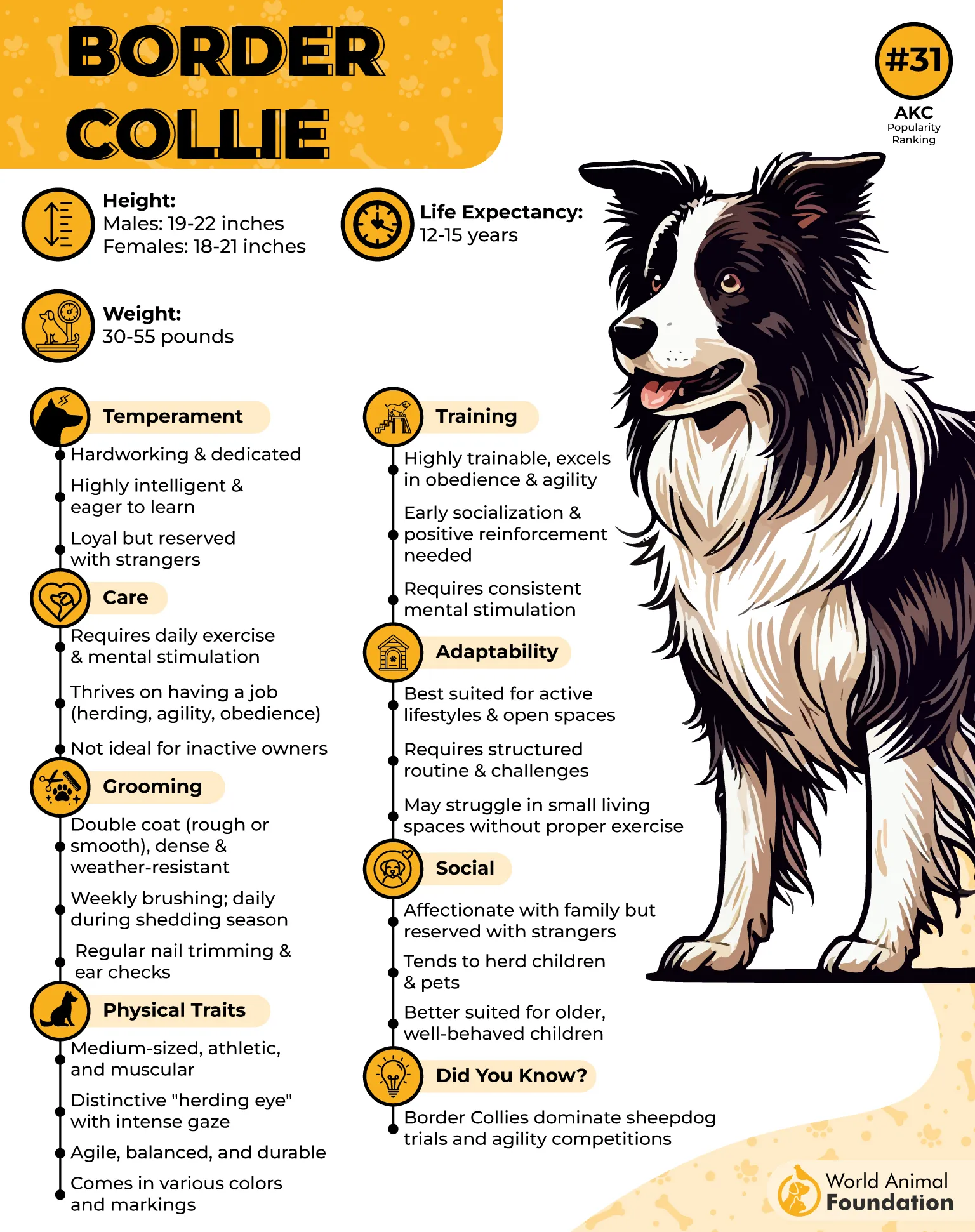
Senior dogs of this breed may show agitation in new ways. They might wander more at night, seem distracted, or become uneasy around cats or new pets in the home. It’s a sign their sharp mind still needs focus, even if their body isn’t as quick as before. Offering low-impact games or teaching gentle commands can help ease this transition.
Prolonged restive behavior can also be a red flag. In rare cases, it might signal that your dog is suffering from discomfort, cognitive decline, or anxiety. While occasional energy bursts are normal, persistent pacing or whining deserves a closer look. A vet visit can rule out deeper health concerns and offer support for behavioral changes.
Petplan states that Border Collies thrive on structure, problem-solving, and attention. When they get what they need, they’re calm, affectionate, and quietly confident. But without mental outlets, even the calmest Collie will get bored and agitated — a little reminder that their brilliant brain still needs a daily workout.
4. Jack Russell Terrier

Jack Russell Terriers are known for their energetic and alert personalities, but even they have moments of calm. However, when you notice sudden shifts in your pet’s behavior, like darting around the room or digging at the bed obsessively, you’re likely witnessing one of their occasional restless episodes.
Though most restive behavior is simply a sign of boredom or unspent energy, it’s important to keep an eye on patterns. If your Jack Russell begins showing unusual behaviors like head tilting, constant circling, or confusion, it could be related to neurological conditions. Neurological issues may look similar to playfulness, but will feel more repetitive or disconnected.
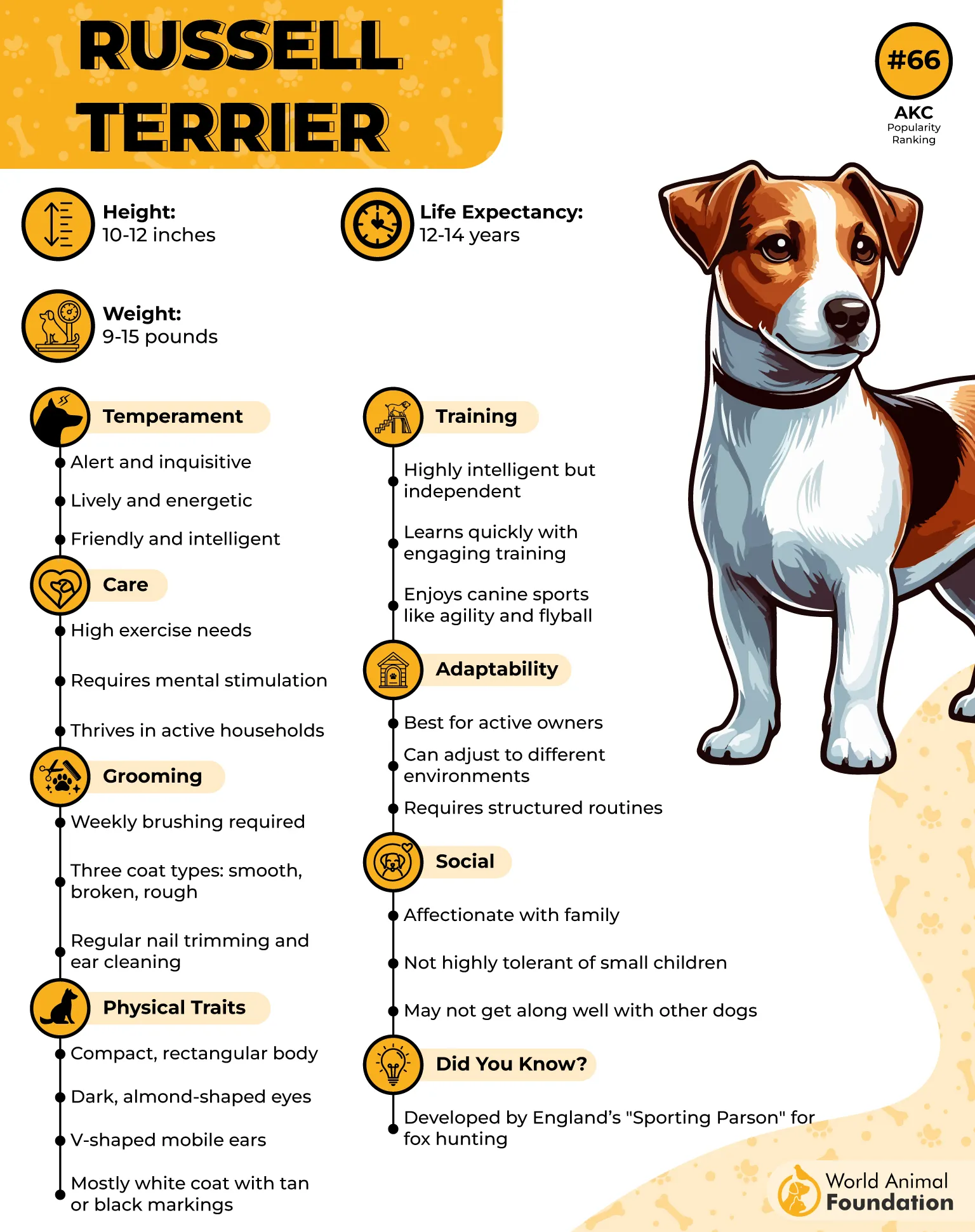
When in doubt, observing your dog closely is the best course of action. If their agitation becomes excessive or is paired with changes in posture, sensitivity around the head, or disorientation, it’s time for a vet check. These symptoms might point to underlying problems that need medical attention.
As noted by Hillspet, most Jack Russells are just naturally curious and high-spirited. They may appear suddenly restless if they haven’t had enough physical or mental stimulation. A short game of fetch, a scent-based puzzle, or even hiding treats around the house can satisfy their instincts and restore calm.
Understanding what triggers your Jack Russell’s restless moments — and what’s simply part of their spirited nature — helps you respond the right way. With patience and regular activity, their energy becomes a lovable trait rather than a challenge.
5. Siberian Husky

Siberian Huskies are known for their independent and often laid-back attitude, but they aren’t strangers to occasional restlessness. These dogs are naturally athletic and curious, and when they don’t get enough mental or physical stimulation, it can show up in surprising ways. You might find them pacing, whining, or digging — even when the house seems calm and quiet.
Sometimes, a sudden shift in behavior could be linked to something more than boredom. If your Husky becomes restless without an obvious reason, it’s worth considering whether they’re experiencing discomfort or pain. This is especially true for aging Huskies or those with underlying joint issues. Restlessness might be their only way of signaling that something doesn’t feel right.
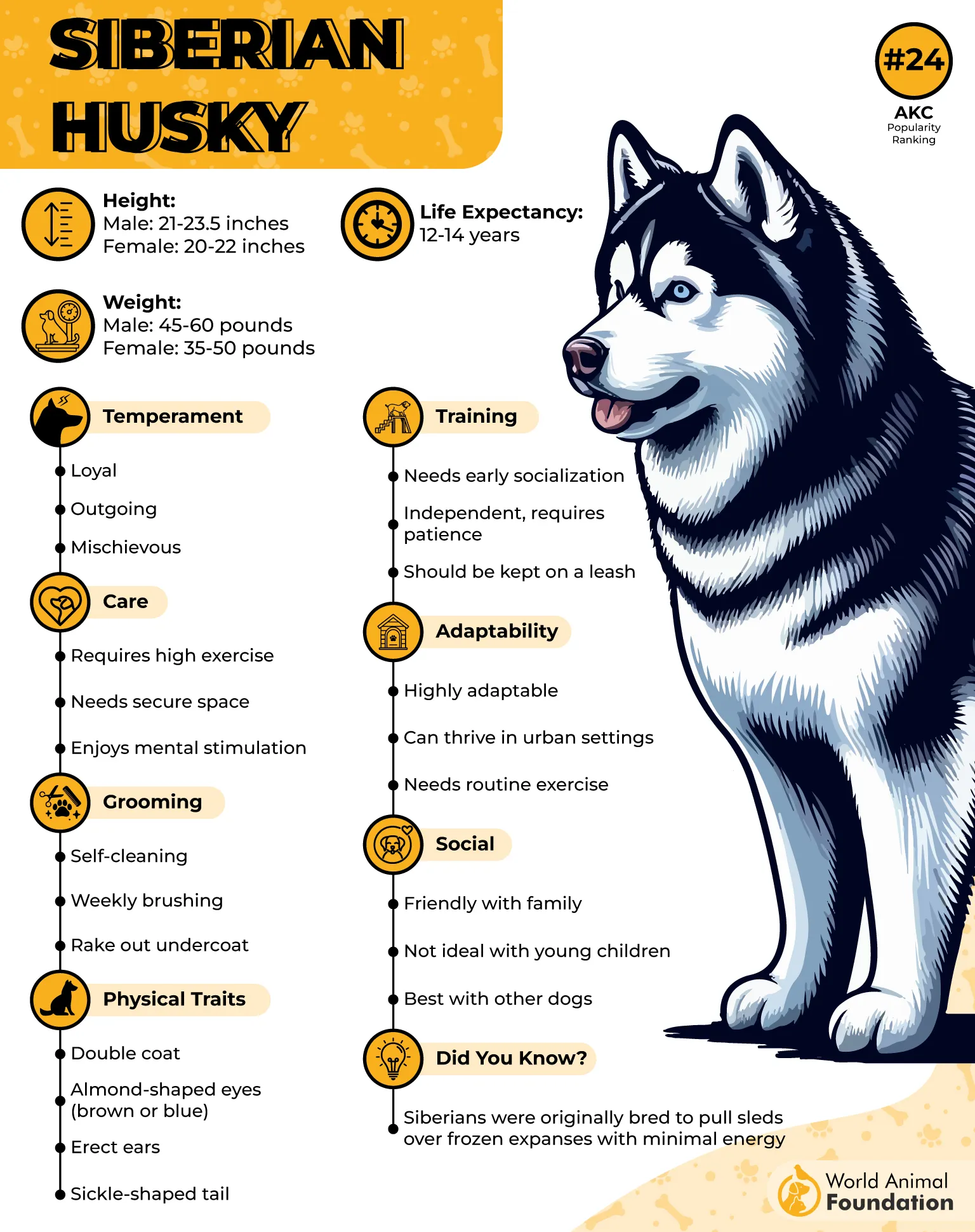
In some cases, restlessness may appear after you’ve started giving a new medication. Changes in mood, sleep patterns, or energy levels can be side effects worth discussing with your vet. If your usually mellow Husky becomes agitated or unusually active, a medication review might be necessary.
Huskies are known to be tough and rarely show weakness openly. That’s why their agitation can be an early and subtle sign that something needs attention, either physical or emotional. Being in tune with your dog’s habits makes it easier to catch these moments and act quickly.
While restive behavior in a Siberian Husky is often nothing more than a cry for attention or adventure, it’s important to rule out anything serious. A balance of exercise, engagement, and health monitoring keeps this breed happy and helps ensure their occasional agitation stays manageable, and not a sign of something deeper.
6. Weimaraner

Weimaraners are affectionate, intelligent, and always alert. Often called “Velcro dogs” because of their strong attachment to their humans, they can be calm and loving one moment and suddenly restless the next. It’s not unusual to see a Weimaraner pacing, whining, or having a problem settling, especially when their need for more exercise or mental stimulation isn’t met.
Agitation and restive behavior in this breed isn’t just about energy — it’s deeply tied to their emotional and mental state. For younger dogs or a puppy, it could be one of the common reasons, like teething, loneliness, or excess energy.

But in older dogs, it can sometimes hint at deeper concerns such as cognitive dysfunction, where confusion, sleeplessness, and agitation creep in gradually. It’s heartbreaking for any pet owner to watch their once calm companion become anxious without a clear cause.
To understand the root, vets may recommend blood work to rule out any underlying health issues. Conditions like thyroid imbalance or even organ discomfort can lead to increased restlessness and other symptoms like pacing or clingy behavior. Weimaraners are sensitive dogs, and small physical issues can quickly turn into big behavioral signals.
If you live in a multi-pet home, restive behavior may also be triggered by other pets. Jealousy, changes in routine, or competition for attention can unsettle a Weimaraner more than most breeds. Ensuring early access to training and socialization helps reduce anxiety and helps them stay balanced around others.
When Weimaraners get the exercise, love, and medical care they need, their occasional restlessness becomes manageable — just a little quirk in an otherwise loyal and loving dog.
7. Irish Setter

Irish Setters are known for their boundless energy and friendly nature, making them one of the most lively and affectionate dog breeds. However, even these spirited dogs can experience moments of agitation.
While they are typically playful and calm, they can become anxious or unsettled, especially as they age. As your Irish Setter grows older, the dog’s age can lead to changes in behavior.
If your Irish Setter starts exhibiting signs of increased anxiety, like pacing, whining, or excessive barking, it might be due to underlying issues like separation anxiety. Irish Setters are incredibly loyal and can become distressed when left alone. This breed thrives on companionship and can become restless when they don’t feel securely connected to its owner.
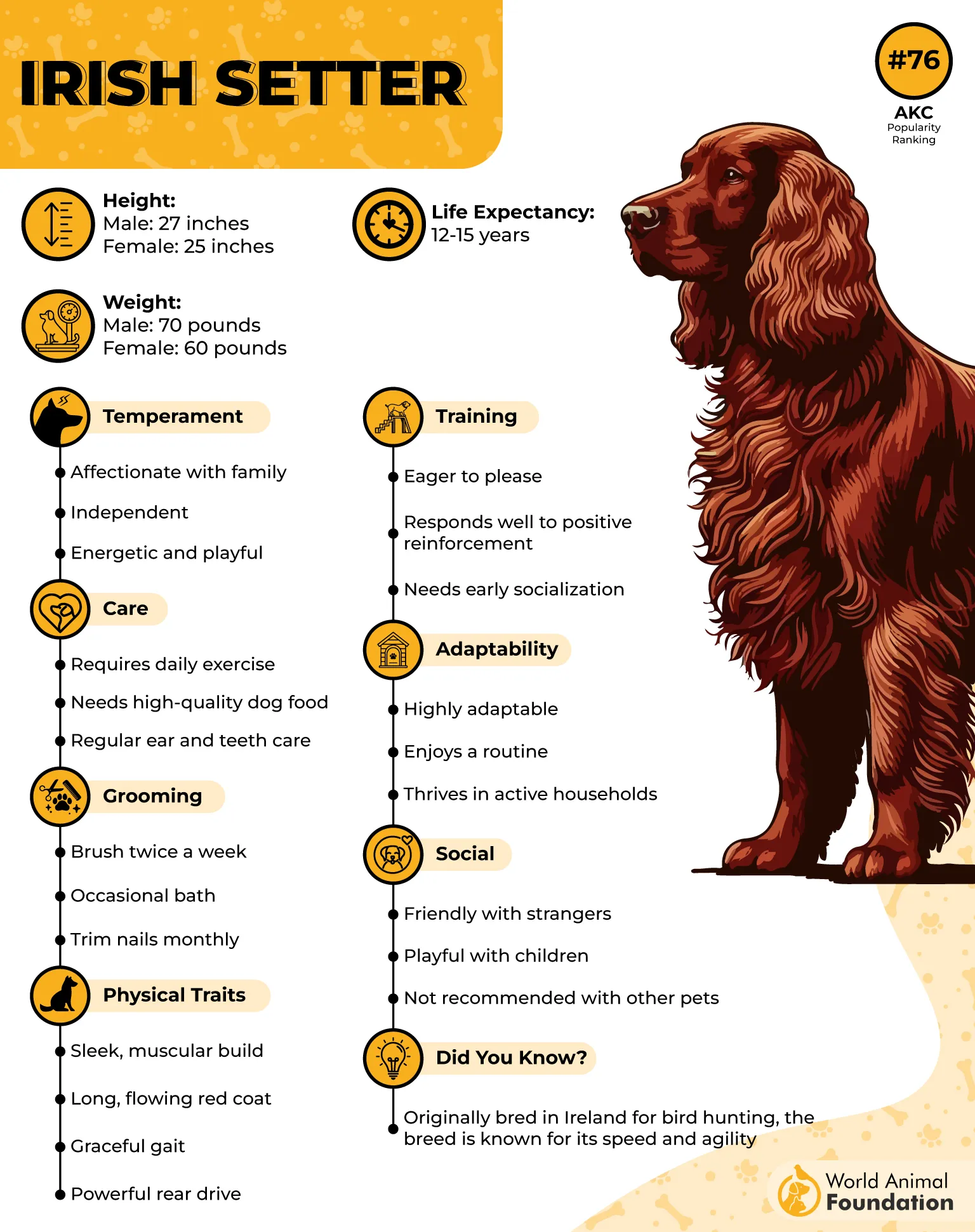
Sometimes, restlessness in Irish Setters can be caused by discomfort from pain medications or an injury that hasn’t fully healed. It’s important to closely monitor how your dog reacts to new treatments and consult your vet if you notice any unusual behaviors or discomfort.
While restlessness can be a normal part of an Irish Setter’s energetic nature, sudden or prolonged changes in behavior should not be ignored. Early intervention and a thorough check-up can help ensure your dog remains happy and healthy, with less anxiety and more calm moments to enjoy.
8. Australian Cattle Dog

Australian Cattle Dogs are known for their intense drive, intelligence, and high energy levels. While they’re often calm and focused when engaged in work or play, their fidgetiness can become apparent when they aren’t getting enough stimulation or exercise. Their occasional restlessness isn’t just about excess energy — it’s also a signal that their needs aren’t being met.
Britannica states that if your Australian Cattle Dog is acting restless, it’s important to consider the underlying cause. These dogs are used to being active, so periods of inactivity can trigger anxious behaviors like pacing, whining, or excessive barking. If their usual long runs or work duties are limited, even short walks can be a great way to help alleviate their stress and calm their restless moments.
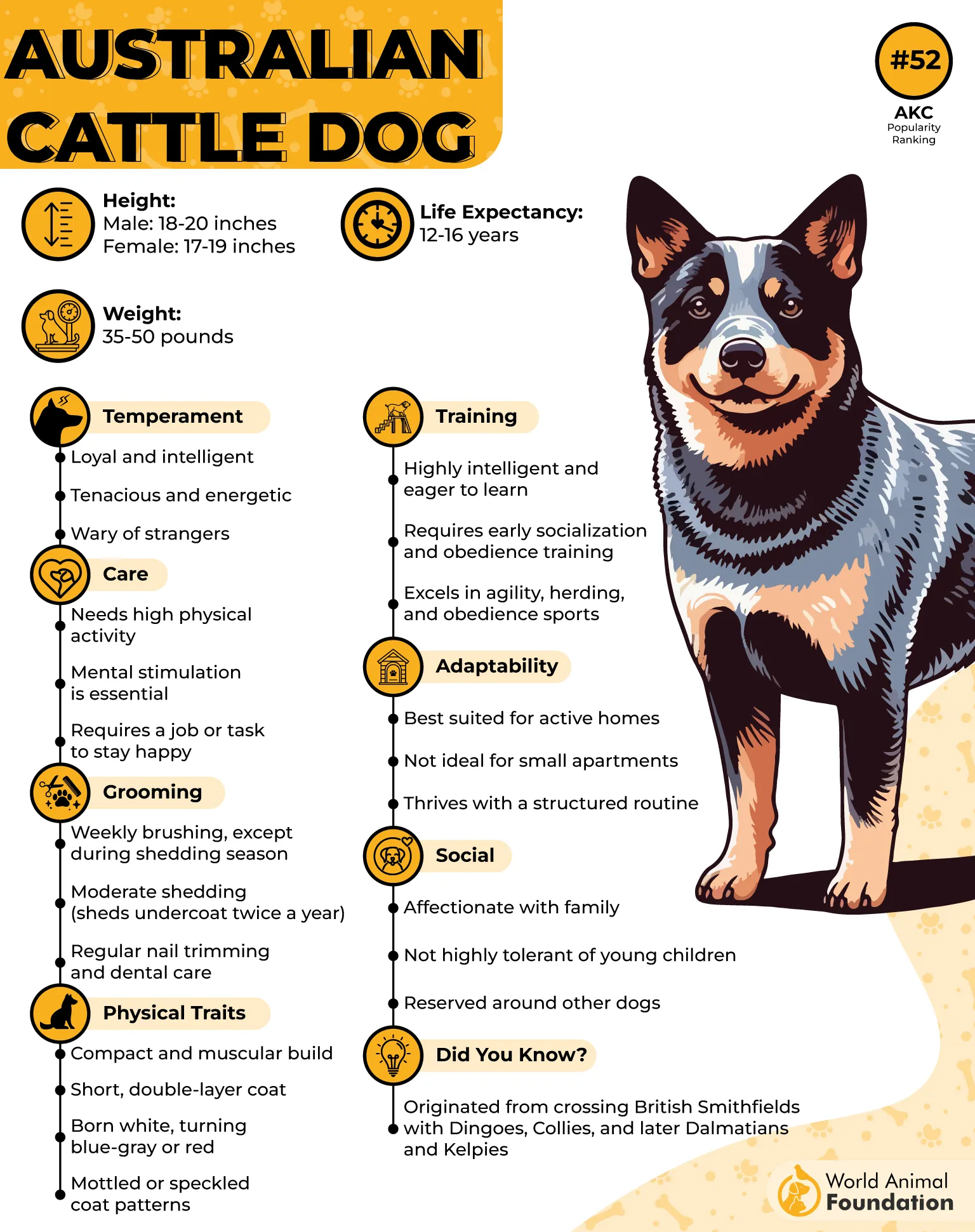
Sometimes, restive behavior can be linked to physical discomfort, such as an upset stomach or pain from an injury. These issues might not always be obvious, but they can lead to noticeable changes in your dog’s behavior.
Keeping a close eye on their eating habits and observing any clinical signs of discomfort can help you identify if something is wrong. In some cases, seeking professional veterinary care is essential to rule out any health problems.
In older Australian Cattle Dogs, changes in behavior could indicate a need for more attentive care. As they age, their energy levels might decrease, but restlessness can still appear if conditions like arthritis or digestive issues compromise their well-being.
Managing your dog’s needs, maintaining a healthy routine, and providing proper mental and physical stimulation will help minimize fidgetiness in Australian Cattle Dogs. When their environment supports their energy and health, these dogs are content, loyal companions with just the right balance of energy and calm.
9. Dalmatian

Dalmatians are known for their striking appearance and energetic personality. While they can be calm and affectionate companions, their occasional edginess is a common trait. Dalmatians thrive on activity, and without proper exercise or mental stimulation, they can become agitated.
If a Dalmatian starts showing signs, such as pacing or destructive behavior, it could be a sign of something more than boredom. GI issues, like digestive upset, can sometimes lead to discomfort that makes a Dalmatian seem restless. It’s crucial to monitor their eating habits, as stomach problems can often go unnoticed in active breeds.
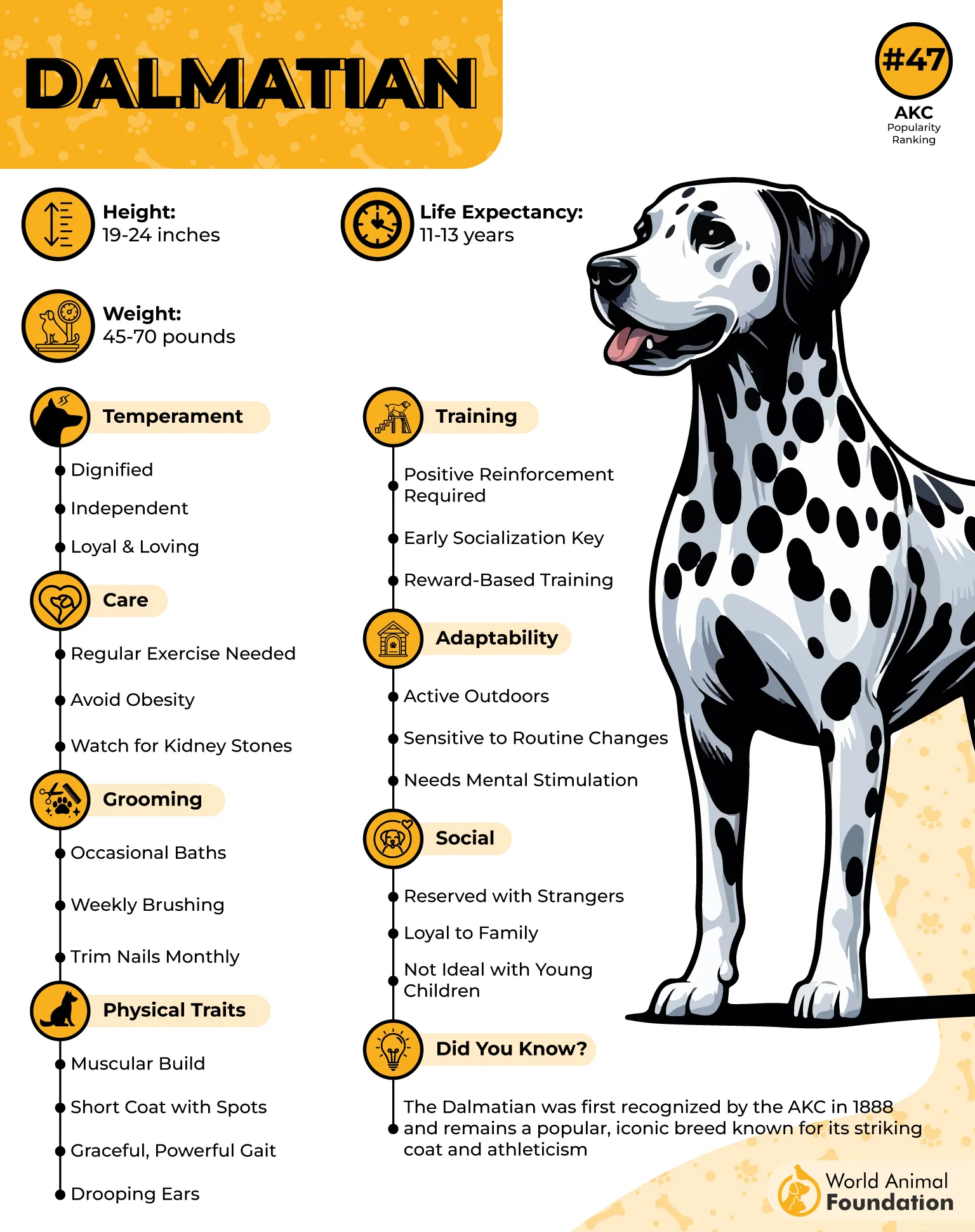
PetMD states Dalmatians are prone to certain genetic conditions, and persistent discomfort or agitation might indicate something that requires veterinary attention. Conditions like bladder stones or urinary tract issues can cause restive behavior, so it’s important to consult a vet to rule out any serious concerns.
Dalmatians need regular activity to prevent frustration. Whether it’s a long run, interactive play, or puzzle games, keeping them engaged will help reduce the chances of them becoming overly agitated.
While their energy and occasionally restless behavior can be a challenge, Dalmatians are generally happy, loyal companions when their needs are met. Regular veterinary check-ups and attention to their well-being will ensure that restive behavior stays manageable and doesn’t signal a more serious underlying issue.
Conclusion
Having a restless dog can be challenging, but understanding the root causes—whether behavioral or linked to a medical condition—is key to offering your pup the care they need. Breeds like the gentle Saint Bernard, despite their calm demeanor, may exhibit restlessness due to discomfort, fear, or unmet needs.
Sometimes, something as simple as a change in food, unfamiliar sounds, or irritation around their ears can trigger unease. Dog owners need to observe and address these signs early, as overlooking them can lead to more serious issues.
In some cases, agitation may be a symptom of a deeper problem, and ignoring it can lead to heartbreaking outcomes. Seeking timely veterinary guidance ensures your dog stays healthy, happy, and at peace.
Ultimately, patience, attention, and love are essential in caring for a restless dog. With the right approach, even the most unsettled moments can be turned into opportunities for bonding and healing.


